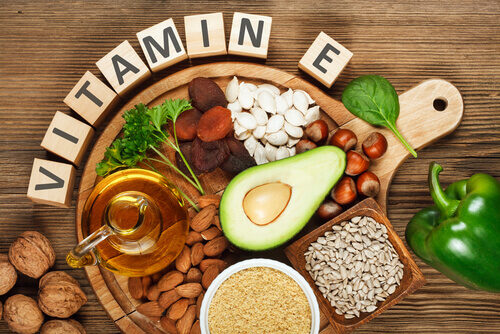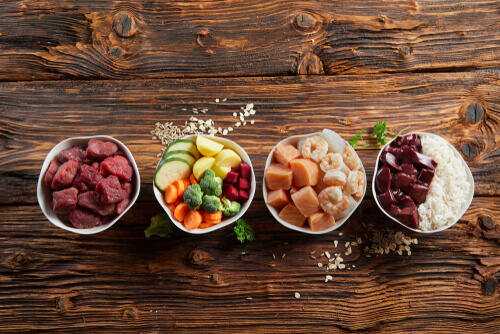Calorie Counts in Pet Food

Each pet has different nutritional needs. This depends on many factors, such as age, sex, reproductive status, and the size of the animal. However, it’s very important to choose a good quality diet and adjust the calorie counts of pet food to your animal’s ideal weight.
How much food should I give my pet?
There’s no exact predetermined amount of food for each animal. This is because the calorie count necessary for each pet depends on several factors. It’s important to know about these factors to avoid overfeeding your pet or worsening a health issue:
- Age
- Size
- Ideal weight – this doesn’t refer to the current weight of the animal, but rather the ideal weight consistent with the animal’s size, breed, and age
- Daily activity – many dog foods specify on the bag what the daily ration should be for a dog with high, medium, or low daily activity
- Any illness or disease
In the wild, for example, wolves eat a large amount of food in a short time when it’s available. Their stomach supports a lot of bloating. However, for adult dogs, it’s best to divide the food into two daily feedings.
By dividing their food, the food is better distributed in their stomachs and it favors better digestion. For example, in smaller breeds, they have faster metabolisms; doing two feedings distributes energy much better throughout the day. In large breeds, dividing the food helps prevent stomach torsion, which is a common problem.

Food and calorie counts for each age
The reason that there are several types of the same food is due to the different calorie intake for each animal. As we already mentioned, the necessary calorie count varies according to the age and size of the pet, among other factors.
Now, we’ll take a look at the different nutritional needs according to each dog’s age.
Calorie counts for puppies
After breastfeeding, a puppy will gradually start eating dry food. From two months old to adulthood, energy and protein requirements are very high for proper growth. Therefore, puppies should consume approximately 3500 to 4500 kcal/kg of food if they’re large and medium dogs or 3200 to 3800 kcal/kg for small breeds.
At this stage, we recommend you divide your puppy’s food into three feedings. In addition, you can take advantage of the time right after a meal to take your dog for a walk. This can help your puppy to learn to relieve itself outside.
Calorie counts for adult dogs
In this range, you’ll find the most variety, as the recommended calorie count for an adult dog not prone to obesity is between 3500 to 4500 kcal/kg per day.
However, for obese or overweight dogs, there are lower-calorie dog foods that have 30% fewer calories. On the other hand, there are high energy dog foods for dogs that do lots of daily activities, such as dogs that participate in intense sports.

Calorie counts for a senior dog
As a general rule, in a healthy senior dog, the energy requirement is lower because they store more fat, have slower metabolisms, lower activity levels, lower body temperatures, and they are generally slower and less active. Therefore, they only need 3,000 to 4,000 kcal/kg of feed per day to avoid obesity.
If your dog suffers from a disease, it’s also necessary to find a diet adapted to their problem. A vet can help you figure out whether you need food with less of any ingredient, an additional compound, or lowering or eliminating the content of a nutrient. In fact, correct dietary management is sometimes essential to treat the symptoms of an illness.
The key to a good diet
The right amount of food is essential to help your puppy grow or prevent diseases in adult and senior dogs. However, it’s not just the amount that’s important.
In addition to the calorie count of pet food, the quality of the food, as well as the variety and proportion of ingredients, are the main factors that you should take into account.
All cited sources were thoroughly reviewed by our team to ensure their quality, reliability, currency, and validity. The bibliography of this article was considered reliable and of academic or scientific accuracy.
- McDonald, Edwards, Grennhalgh y Morgan. Nutrición animal.Zaragoza, Editorial Acribia, 1995.
- Hand, Tharcher, Remillard y Roudebush. Nutrición clínica en pequeños animales. Buenos Aires; Panamericana, 2000.
- Guía de nutrición Hill’s.
This text is provided for informational purposes only and does not replace consultation with a professional. If in doubt, consult your specialist.